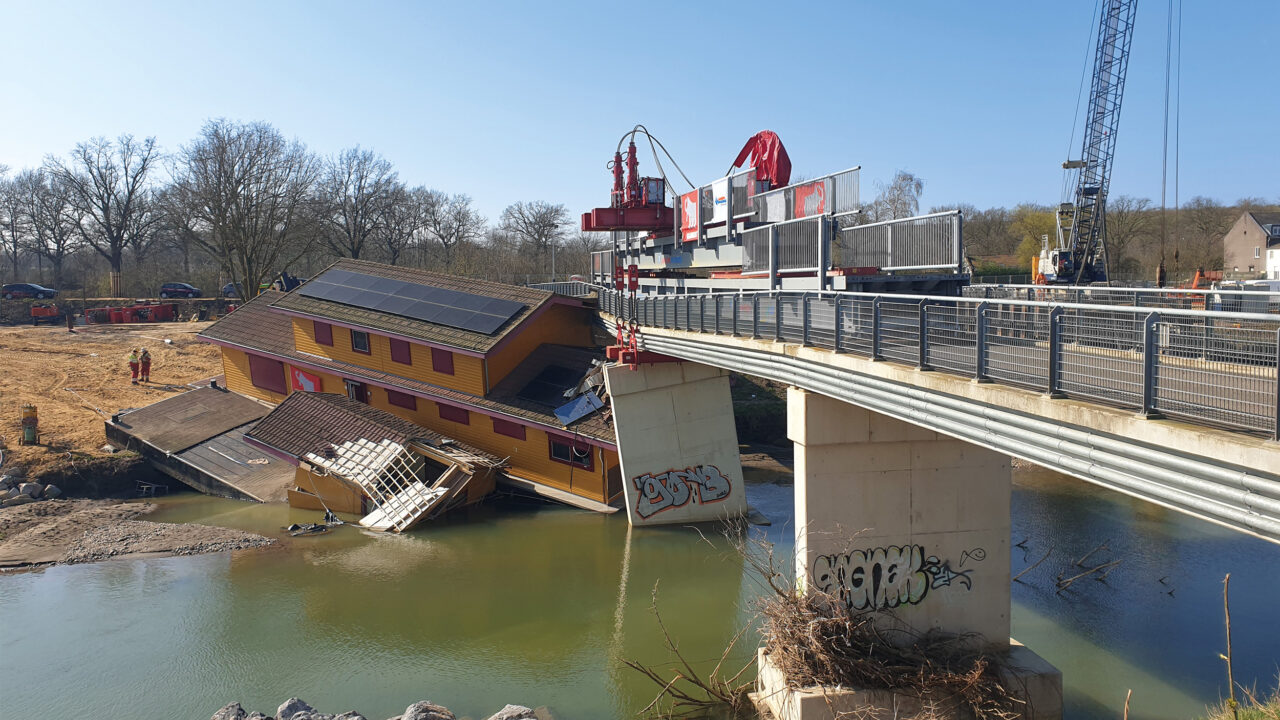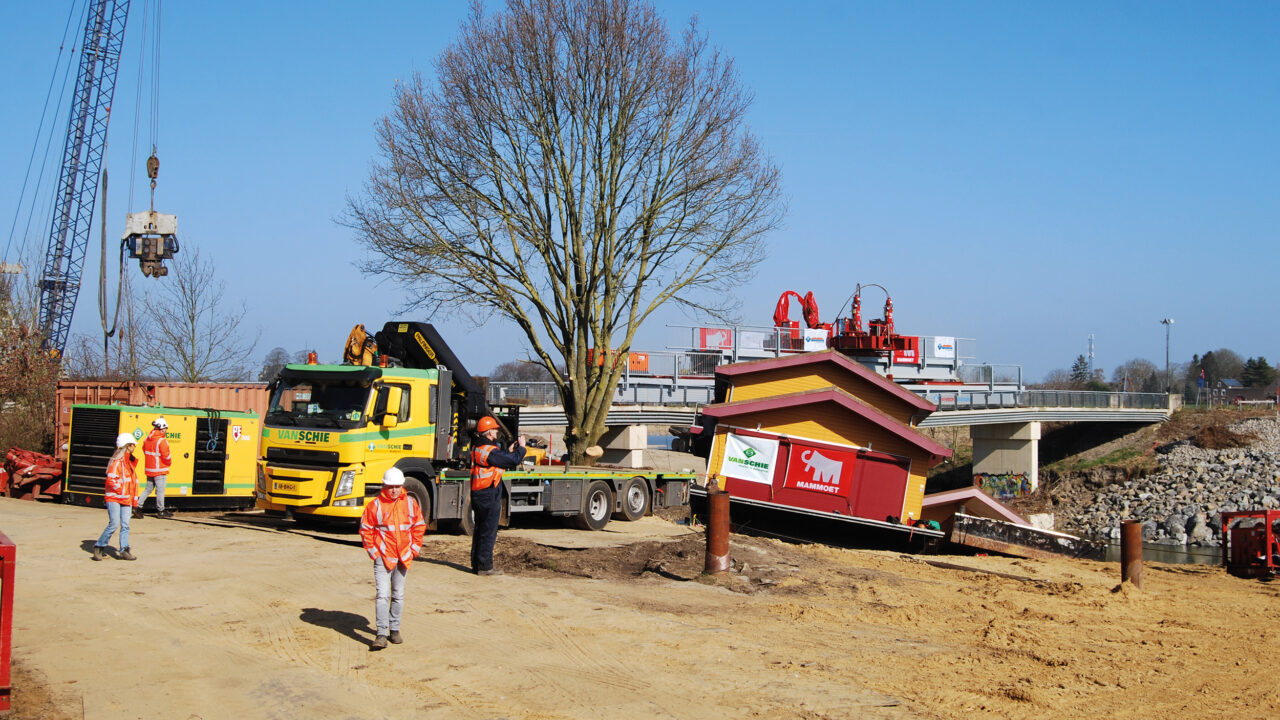Extreme high water
It has been in the news extensively: the houseboat that slammed into the bridge just north of Maastricht. The ark was in a tributary of the Meuse River, close to a spillway, which serves as an overflow area. A spillway is a raised wall over which water is allowed to flow when the water in the Meuse becomes too high. After prolonged rainfall, the water in the fast-flowing river had become so high that the 120-meter-wide dam gave way and the houseboat was swept away by the swirling water. One of the bridge piers was severely shaken, threatening to collapse.
Emergency Plan
Good advice was expensive. First, the wildly flowing water had to be stopped. Then, with the help of Army Chinouk helicopters, by pouring large quantities of concrete blocks, an emergency dam was built. This allowed the water to drain behind this dam and the houseboat was left half dry. Actually, it was two “boats,” belonging to the same owner: the houseboat itself and a pontoon with a gazebo on it. It was clear that the bridge had to be stabilized as soon as possible. Janson Bridging (part of the Van Schie Group), together with Mammoet, came up with an emergency construction. A steel bridge (thirty-three meters long) was placed over the concrete bridge, with a shorter steel bridge over it, twenty meters long. On this structure, Mammoet was able to place so-called “beach jackets” that held the concrete bridge in an iron grip. To pull the two damaged boats out of the blubber, a lot of preliminary work had to be done. Among other things, the sharply sloping bank had to be flattened and cleared of all vegetation, eventually turning it into a kind of beach. Van Schie also had to vibrate six large steel tubes into the ground (supplied by HP Staal, also a part of Van Schie). These were needed to attach the winches to, in connection with the enormous tractive force that had to be developed. After several attempts, it finally succeeded, partly because of the rubber rolling bellows that were inflated under the two boats.








